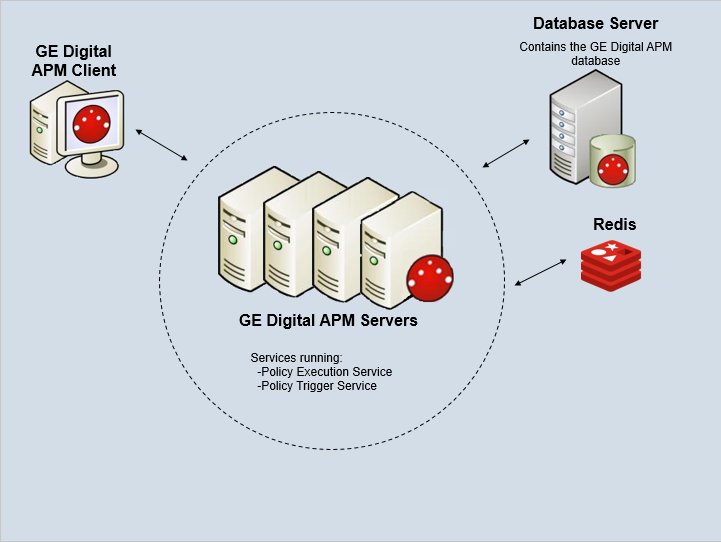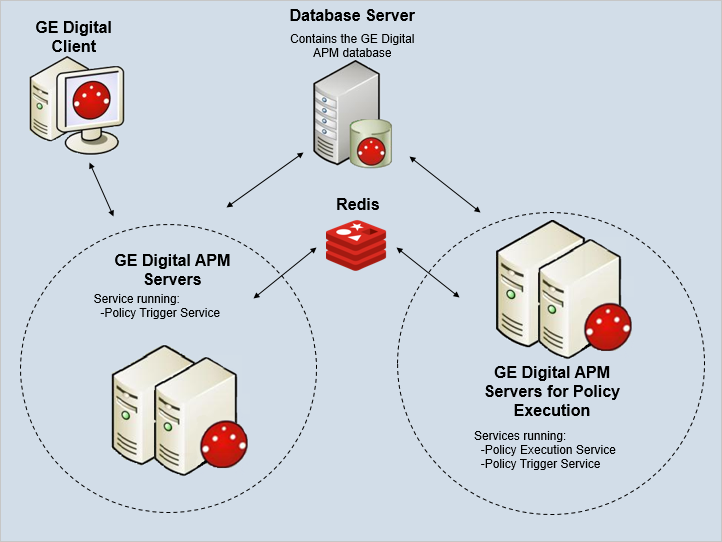
Depending on the number of policies that you need to manage in your system, you may have multiple GE Digital APM Servers to process policy executions. Based on your company’s preference for server load balancing, you can configure your GE Digital APM System Architecture using global load balancing or isolated load balancing.
Regardless of the approach you use, you must fully configure each GE Digital APM Server according to the steps for deploying the basic GE Digital APM system architecture. In addition, each GE Digital APM Server must be configured to use the same instance of Redis.
Global Load Balancing
In global load balancing, you configure all GE Digital APM Server(s) to process policy executions in a single load-balanced cluster. In this scenario, an increase in activity from any server can be absorbed across all servers in your system architecture. Because there is only one cluster to manage in this scenario, this is the simpler configuration to set up and manage.
In this scenario, you must:

Isolated Load Balancing
In isolated load balancing, you configure designated GE Digital APM Server(s) to process policy executions in a separate load-balanced cluster from other GE Digital APM Server(s). In this scenario, the policy execution processes are isolated from the GE Digital APM Server processes, therefore preventing an increase in activity in one cluster from negatively impacting the processes of the other.
In this scenario, you must:
Configure the Policy Trigger service on all GE Digital APM Servers to specify the name of the cluster used for policy executions.

Copyright © 2018 General Electric Company. All rights reserved.